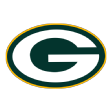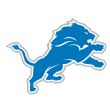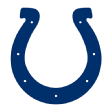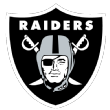Twenty-three NFL quarterbacks entered the 2016 season earning at least $15 million annually, providing exasperated New York Jets fans with welcome perspective on Ryan Fitzpatrick's less expensive $12 million salary. While every team relies upon the man behind center to win games, some quarterbacks are carrying much heavier burdens.
Thirteen QBs in particular stand out for their ability to operate reasonably well with less help from their running backs, defenses and playcallers. We start with a list of 30 QBs -- one for every team but Chicago and San Francisco, whose starters haven't played enough -- and pare them down to the final list through four logical steps. The final rankings combine the data with my own feel for how players have performed under various team-based circumstances.
Step 1. Exclude badly underperforming QBs
Rationale: Setting a baseline performance level made sense for quality control, so any QB ranking lower than 23rd in Total QBR was off the list.
Eliminated: Cody Kessler, Blake Bortles, Alex Smith, Joe Flacco, Ryan Tannehill, Brock Osweiler, Carson Wentz, Ryan Fitzpatrick, Case Keenum
What you need to know: Carson Palmer, ranked 22nd in the QBR rankings, barely made the first cut. His Arizona Cardinals will take their 23-20 victory over the San Francisco 49ers on Sunday, but only after Palmer nearly gave it away through turnovers. The 2015 MVP candidate is having trouble winning despite having a top running back (David Johnson) and one of the league's better defenses on his side.
Step 2. Remove QBs from teams that are unusually reliant upon running backs
Rationale: Run-oriented offenses take pressure off quarterbacks, especially when running backs are the ones carrying much of the load.
Eliminated: Trevor Siemian, Jameis Winston, Marcus Mariota, Dak Prescott
What you need to know: These four quarterbacks' teams handed off to their running backs at unusually high rates in situations when there was greater playcalling flexibility. These situations included first and second downs when trailing by no more than seven points, excluding the final two minutes of halves.
Mariota's Tennessee Titans relied on running backs carrying the ball on a league-high 61.8 percent of these snaps, and why not? DeMarco Murray has been dominant behind an improved offensive line. Prescott's Dallas Cowboys (55.9 percent), Winston's Tampa Bay Buccaneers (54.0 percent) and Siemian's Denver Broncos (52.4 percent) were also on the high end. The Green Bay Packers, reduced to using receiver Ty Montgomery as a runner, have operated at the other extreme, producing a league-low 35.5 percent rate in this category.
Step 3. Remove QBs from teams with stronger defenses.
Rationale: A quarterback with a top defense on his side is a quarterback with some margin for error. He can breathe easier. Fitzpatrick illustrates the point. He has won 68.8 percent of his starts when the opposing team failed to exceed the 22-point league average for scoring since his 2005 rookie season. Life is good for even average QBs when his defense keeps the scoring bar low.
Eliminated: Palmer, Sam Bradford, Eli Manning, Philip Rivers
What you need to know: All four QBs eliminated here play for teams with defenses ranked among the NFL's top nine in expected points added (EPA) per game, a metric I prefer for reasons explained here. Palmer and Rivers nearly missed the cut at the previous step. Both benefit from upper-tier running backs who carry the ball frequently. The Chargers' defense has been much less consistent, but it dominated against Denver twice and fared decently against Atlanta.
Palmer, Manning and Rivers are critically important to their teams, of course. While some coaches and evaluators think Manning has become skittish and lost strength in the pocket, they also see him as the most important piece in a check-with-me offense that makes Manning the Giants' de facto playcaller. They realize Manning isn't getting near enough help from his ground game, to the point that the Giants have become a pass-first team in short-yardage situations.
Meanwhile, Russell Wilson gets a reprieve at this stage even though his Seattle defense has long ranked among the NFL's best. That is because Wilson has carried the offense spectacularly over the past two games while his defense, playing without Michael Bennett, suffered two of its four worst EPA performances in a 27-game span dating to the 2015 opener. Those performances have dropped Seattle to No. 10 in EPA per game for the season.
Wilson has also played without much help from his ground game. The Seahawks rank 30th in the second category spelled out above (running back rushing rate on early downs, excluding when teams were trailing by large margins). Seattle also ranks 27th in rushing yards by running backs.
Step 4. Rank the remaining QBs by who is doing the most with the least
Rationale: This was the point of the exercise after narrowing down the list.
What you need to know: I sorted the remaining 13 quarterbacks by how many points per start each contributed, accounting for QBR and how much each has played, above what an average quarterback would contribute. ESPN's points above average (PAA) metric makes this possible (Tom Brady leads the league at plus-6.1 EPA/start). From there, I took into account supporting casts before settling on a final order.
The Final 13
 1. Aaron Rodgers, Green Bay Packers (+3.4 PAA/start): The Packers have run out of running backs more than once this season. Jordy Nelson is not 100 percent. Clay Matthews and Sam Shields lead the injury list on defense. Rodgers has compensated by adding even more value than usual through his rushing and ability to draw penalties. He could be nearing the red line and vulnerable to breaking down.
1. Aaron Rodgers, Green Bay Packers (+3.4 PAA/start): The Packers have run out of running backs more than once this season. Jordy Nelson is not 100 percent. Clay Matthews and Sam Shields lead the injury list on defense. Rodgers has compensated by adding even more value than usual through his rushing and ability to draw penalties. He could be nearing the red line and vulnerable to breaking down.
 2. Matthew Stafford, Detroit Lions (+2.7): The Lions have also had a rough time keeping their running backs healthy. They rank 30th in defensive EPA and 26th in rushing yards per game by running backs, but Stafford is keeping Detroit firmly in the NFC North race with the NFL's sixth-best QBR (72.0).
2. Matthew Stafford, Detroit Lions (+2.7): The Lions have also had a rough time keeping their running backs healthy. They rank 30th in defensive EPA and 26th in rushing yards per game by running backs, but Stafford is keeping Detroit firmly in the NFC North race with the NFL's sixth-best QBR (72.0).
 3. Russell Wilson, Seattle Seahawks (+1.7): Wilson ranks last among the 13 players in PAA/start, but his health also factors into the equation. Wilson has played most of the season with ankle and knee injuries that prevented him from running or even scrambling effectively until recently. He has played behind a struggling offensive line featuring undrafted tackles. He has played without his starting running back. Lately, Wilson has played his best without as much defensive support.
3. Russell Wilson, Seattle Seahawks (+1.7): Wilson ranks last among the 13 players in PAA/start, but his health also factors into the equation. Wilson has played most of the season with ankle and knee injuries that prevented him from running or even scrambling effectively until recently. He has played behind a struggling offensive line featuring undrafted tackles. He has played without his starting running back. Lately, Wilson has played his best without as much defensive support.
 4. Andrew Luck, Indianapolis Colts (+2.8): The Colts are 31st in defensive EPA and 31st in how frequently their running backs have carried on early downs. Luck is averaging 51.1 action plays per game -- which includes pass plays and QB runs/scrambles -- second only to Bortles. Luck ranks eighth in QBR regardless.
4. Andrew Luck, Indianapolis Colts (+2.8): The Colts are 31st in defensive EPA and 31st in how frequently their running backs have carried on early downs. Luck is averaging 51.1 action plays per game -- which includes pass plays and QB runs/scrambles -- second only to Bortles. Luck ranks eighth in QBR regardless.
 5. Drew Brees, New Orleans Saints (+3.7): Overcoming one of the NFL's worst defenses year after year has been tough enough without the special-teams pratfalls that have added to the Saints' frustrations. Brees does benefit from more than a decade's time in an outstanding scheme. New Orleans is also getting 100.2 yards rushing per game from its running backs. That ranks 12th.
5. Drew Brees, New Orleans Saints (+3.7): Overcoming one of the NFL's worst defenses year after year has been tough enough without the special-teams pratfalls that have added to the Saints' frustrations. Brees does benefit from more than a decade's time in an outstanding scheme. New Orleans is also getting 100.2 yards rushing per game from its running backs. That ranks 12th.
 6. Matt Ryan, Atlanta Falcons (+4.1): Ryan has averaged 41.4 action plays per game. That figure is the lowest for any of the 13 quarterbacks making the final cut, an indication that the Falcons are doing a good job managing his workload, relatively speaking. But with the 29th-ranked defense by EPA, Ryan and the offense face an uphill climb.
6. Matt Ryan, Atlanta Falcons (+4.1): Ryan has averaged 41.4 action plays per game. That figure is the lowest for any of the 13 quarterbacks making the final cut, an indication that the Falcons are doing a good job managing his workload, relatively speaking. But with the 29th-ranked defense by EPA, Ryan and the offense face an uphill climb.
 7. Cam Newton, Carolina Panthers (+1.8): Newton has been the Panthers' best running back too frequently this season. He ranks down the list at No. 7 in action plays, and his performance has been less consistent in the absence of the many turnovers his defense produced last season. But a case could be made that no QB carries more of the burden for his team overall.
7. Cam Newton, Carolina Panthers (+1.8): Newton has been the Panthers' best running back too frequently this season. He ranks down the list at No. 7 in action plays, and his performance has been less consistent in the absence of the many turnovers his defense produced last season. But a case could be made that no QB carries more of the burden for his team overall.
 8. Andy Dalton, Cincinnati Bengals (+1.9): The Bengals are surprisingly 28th in defensive EPA. Their offensive line hasn't been as good this season, and the receiving corps was diminished when Marvin Jones and Mohamed Sanu left in free agency. Dalton is 13th in QBR despite playing most of the season without Tyler Eifert. He adds value as a runner, both as a scrambler and on zone reads.
8. Andy Dalton, Cincinnati Bengals (+1.9): The Bengals are surprisingly 28th in defensive EPA. Their offensive line hasn't been as good this season, and the receiving corps was diminished when Marvin Jones and Mohamed Sanu left in free agency. Dalton is 13th in QBR despite playing most of the season without Tyler Eifert. He adds value as a runner, both as a scrambler and on zone reads.
 9. Tom Brady, New England Patriots (+6.2 PAA/game): Brady has started only five games this season after New England posted a 3-1 record during his four-game suspension to start the season. Rob Gronkowski's availability and the way Jimmy Garoppolo flourished will not fool anyone into thinking less of Brady. However, those factors and the games he missed keep him lower for now.
9. Tom Brady, New England Patriots (+6.2 PAA/game): Brady has started only five games this season after New England posted a 3-1 record during his four-game suspension to start the season. Rob Gronkowski's availability and the way Jimmy Garoppolo flourished will not fool anyone into thinking less of Brady. However, those factors and the games he missed keep him lower for now.
 10. Ben Roethlisberger, Pittsburgh Steelers (+2.3): Roethlisberger played without Le'Veon Bell early in the season. The offense has also suffered at times without Martavis Bryant (suspended) and Heath Miller (retired).
10. Ben Roethlisberger, Pittsburgh Steelers (+2.3): Roethlisberger played without Le'Veon Bell early in the season. The offense has also suffered at times without Martavis Bryant (suspended) and Heath Miller (retired).
 11. Tyrod Taylor, Buffalo Bills (+2.1): LeSean McCoy's presence takes pressure off Taylor, as do the Wildcat formations, unbalanced lines and other unconventional tactics that make Buffalo challenging for some opponents. Taylor also ranks 25th in action plays per start. He was at his best in playing a leading role during a near-upset victory at Seattle in Week 9.
11. Tyrod Taylor, Buffalo Bills (+2.1): LeSean McCoy's presence takes pressure off Taylor, as do the Wildcat formations, unbalanced lines and other unconventional tactics that make Buffalo challenging for some opponents. Taylor also ranks 25th in action plays per start. He was at his best in playing a leading role during a near-upset victory at Seattle in Week 9.
 12. Kirk Cousins, Washington Redskins (+2.4): The Redskins are especially talented at receiver, tight end and along the offensive line, but they rank 26th in defensive EPA, putting pressure on Cousins to keep pace in high-scoring games.
12. Kirk Cousins, Washington Redskins (+2.4): The Redskins are especially talented at receiver, tight end and along the offensive line, but they rank 26th in defensive EPA, putting pressure on Cousins to keep pace in high-scoring games.
 13. Derek Carr, Oakland Raiders (+2.2): The Raiders rank among the NFL's very best along their offensive line. They are stacked at wide receiver and rank fourth in rushing yards by running backs. Their defense has improved in recent weeks, but Carr carried the offense with his arm when the defense was struggling.
13. Derek Carr, Oakland Raiders (+2.2): The Raiders rank among the NFL's very best along their offensive line. They are stacked at wide receiver and rank fourth in rushing yards by running backs. Their defense has improved in recent weeks, but Carr carried the offense with his arm when the defense was struggling.
